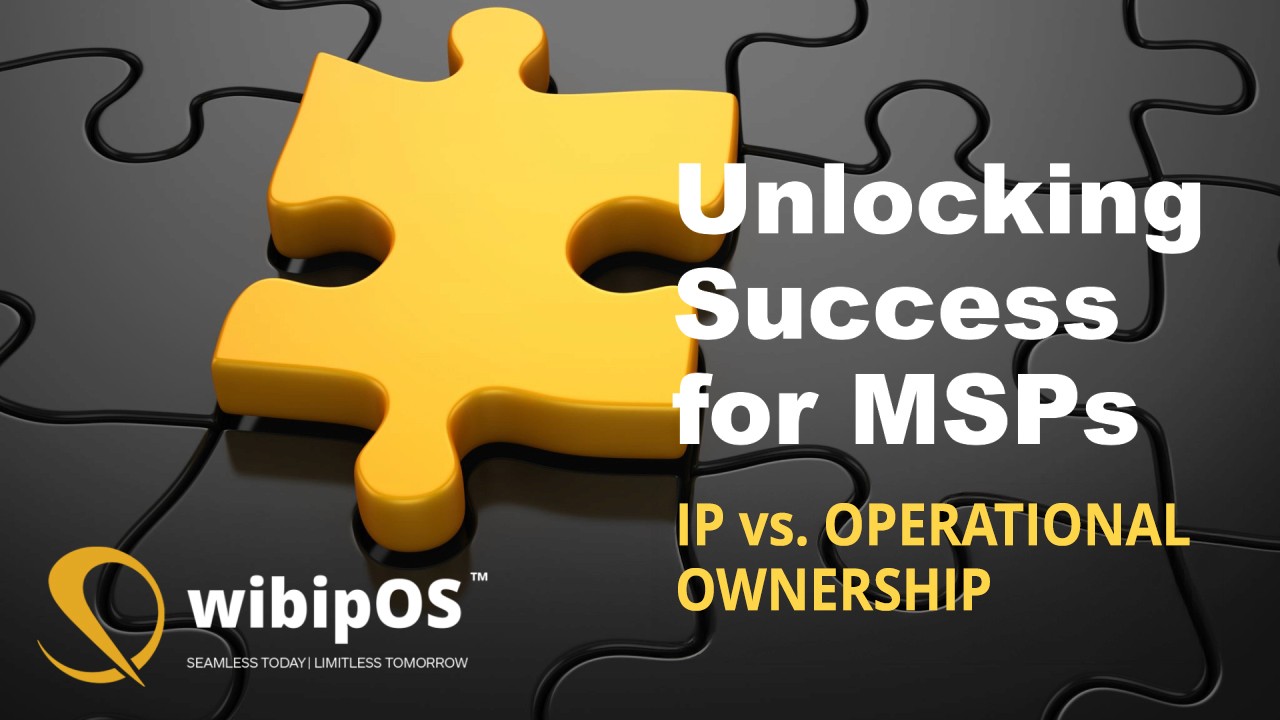Article
IP vs. Operational Ownership: Stopping R&D Bloat Without Losing Control
Feb 17, 2025
|
8
min read

Introduction
Every MSP eventually faces one question: “Should we build everything ourselves to own the IP, or rely on an external platform and risk lock-in?” If you’ve considered writing custom code for each vendor API, you know the dev burden can be massive. Meanwhile, typical third-party solutions bring fears of losing independence—or paying indefinite license fees. The real solution lies in distinguishing IP ownership from operational ownership—and embracing an OS model that minimizes lock-in while cutting your dev overhead.
What Is “Operational Ownership”?
Operational ownership means you control your data, brand identity, and customer relationships. You can swap hardware vendors, adapt to new markets, or even exit a solution if it stops meeting your needs—without losing your entire environment or forklift-changing gear.
IP Ownership typically refers to the platform's source code. Sure, if you build everything in-house, you “own” it, but you also own ongoing development. Every new vendor firmware, every zero-day patch, and every integration becomes your problem alone.
The Traditional Approaches
1. In-House Dev:
Pros: Full IP ownership, no external party controlling features.
Cons: Constant R&D overhead, specialized hires, QA, updates for each vendor change. It’s a treadmill that never ends.
2. Third-Party SaaS:
Pros: Faster to start, the vendor handles updates.
Cons: Potential lock-in, seat-based licensing, per-AP fees, and no direct control over the roadmap.
The wibipOS Take: Multi-Vendor OS
Operational Independence: You keep your hardware, brand, data. If wibipOS no longer fits, you walk away—no forklift meltdown.
Shared IP: You don’t own the wibipOS code but benefit from live co-development. The OS is maintained centrally by WiBUZ, so you don’t have to code every new vendor’s firmware from scratch.
LiveSDK: This embedded dev team updates your environment behind the scenes. You’re free from daily vendor patch frenzies or decoding half-baked “open APIs.”
Result: You get the best of both worlds—operational freedom plus minimal R&D overhead.
Real-World Example
MsTECH in Jamaica needed to unify Ruckus APs and TIP OpenWiFi hardware under tight deadlines. They could have coded their bridging solution, but that might take months of dev. Instead, they used wibipOS modules to unify these vendors quickly. MsTECH still owned its brand identity (“Managed Wi-Fi by MsTECH”) and client data, but the underlying code management lived with WiBUZ. They cut 50% deployment time, saved 40% on R&D costs, and kept operational independence.
Addressing Lock-In Fears
Many MSPs worry, “What if wibipOS raises prices or changes terms?” The difference is that wibipOS is an operating system for multi-vendor management, not a single-vendor gating function. If the membership no longer suits you, you can export your configurations and pivot to another approach—keeping your hardware, data, and customers. There’s no forced forklift or exclusive firmware chain.
Compare that to a large enterprise vendor: if you leave them, you typically ditch not just their code but also the entire hardware suite, which is heavily reliant on proprietary updates or licensing.
When to Build vs. Buy
Build if you have specialized, mission-critical features that no outside solution can replicate. But plan for continuous dev overhead.
Use an OS if you want multi-vendor freedom and an ongoing R&D pipeline that doesn’t drain your internal development. wibipOS ensures your brand is front and center, while code-level updates and vendor integrations remain behind the scenes.
Conclusion and Call to Action
Owning IP is not the only way to stay in control. With wibipOS, you retain operational autonomy—hardware, data, brand—while letting a unified OS handle the grunt work of vendor updates and advanced integrations. The Early Accelerator Program proves ROI in 90 days, so you’re not stuck paying for indefinite dev or seat licenses.
If you’re ready to escape the treadmill of R&D bloat without giving up your brand’s independence, check out the wibipOS Manifesto and book a meeting with me to learn how the EAP will free you from vendor lock-in. Reclaim your operational ownership without drowning in dev overhead.
Subscribe To Our Newsletter
Share It On:
marketing@wibip.com
©2025 All Rights Reserves
